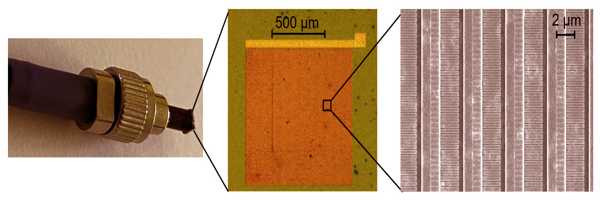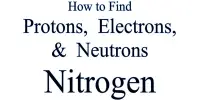UCLA Samueli School of Engineering electrical engineers have developed a more efficient method of converting light from one wavelength to another, paving the way for improvements in the performance of imaging, sensing, and communication systems.
Mona Jarrahi, a UCLA Samueli professor of electrical and computer engineering, led the study, which was published in Nature Communications. The UCLA-led team developed a method to improve wavelength conversion efficiency by investigating a generally undesirable but natural phenomenon known as semiconductor surface states.
Finding an efficient way to convert light wavelengths is critical for the advancement of many imaging and sensing technologies. Converting incoming light into terahertz wavelengths, for example, enables imaging and sensing in optically opaque environments. Previous conversion frameworks, on the other hand, were inefficient and necessitated bulky and complex optical setups.
Engineers have developed a more efficient way of converting light from one wavelength to another, opening the door for improvements in the performance of imaging, sensing, and communication systems.
Surface states occur when surface atoms do not have enough other atoms to bind to, resulting in a breakdown in atomic structure. These incomplete chemical bonds, also known as “dangling bonds,” obstruct the flow of electric charges through semiconductor devices, lowering their performance.
“Many efforts have been made to suppress the effect of surface states in semiconductor devices without realizing that they have unique electrochemical properties that could enable unprecedented device functionalities,” said Jarrahi, who directs UCLA’s Terahertz Electronics Laboratory.
In fact, because these incomplete bonds generate a shallow but massive built-in electric field across the semiconductor surface, the researchers decided to use surface states to improve wavelength conversion.
Incoming light can move electrons in the semiconductor lattice to a higher energy state, allowing them to jump around within the lattice. The electric field created across the surface of the semiconductor accelerates these photo-excited, high-energy electrons even further, and they then unload the extra energy they gained by radiating it at different optical wavelengths, converting the wavelengths.

This energy exchange, however, can only occur at the surface of a semiconductor and must be more efficient. To address this issue, the researchers included a nanoantenna array that bends incoming light so that it is tightly confined around the shallow surface of the semiconductor.
“Through this new framework, wavelength conversion occurs easily and without any additional source of energy as the incoming light crosses the field,” said Deniz Turan, the study’s lead author and a member of Jarrahi’s research laboratory who recently graduated with his doctorate in electrical engineering from UCLA Samueli.
“Many efforts have been made to suppress the effect of surface states in semiconductor devices without realizing they have unique electrochemical properties that could enable unprecedented device functionalities,” said Mona Jarrahi, a UCLA professor of electrical and computer engineering, in a press release.
The researchers decided to take advantage of the large but shallow electric fields created by semiconductor surface states for the new study. The researchers successfully and efficiently converted a 1,550-nanometer light beam into the terahertz region of the spectrum, which ranges from 100 micrometers to 1 millimeter. The researchers demonstrated the efficiency of wavelength conversion by incorporating the new technology into an endoscopy probe that could be used for detailed in-vivo imaging and spectroscopy using terahertz waves.
Without this breakthrough in wavelength conversion, the same terahertz waves would have required 100 times the optical power level, which the thin optical fibers used in the endoscopy probe cannot support. The breakthrough can be applied to optical wavelength conversion in other parts of the electromagnetic spectrum, from microwave to far-infrared wavelengths.
Ping Keng Lu and Nezih Yardimci, both members of Jarrahi’s research group, are co-authors of the study. Other co-authors come from Germany’s Technical University Darmstadt and the United States Department of Energy’s (DOE) Ames Laboratory, which is affiliated with Iowa State University.
















